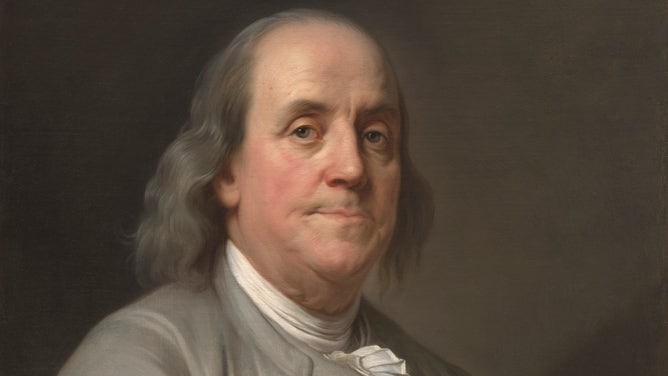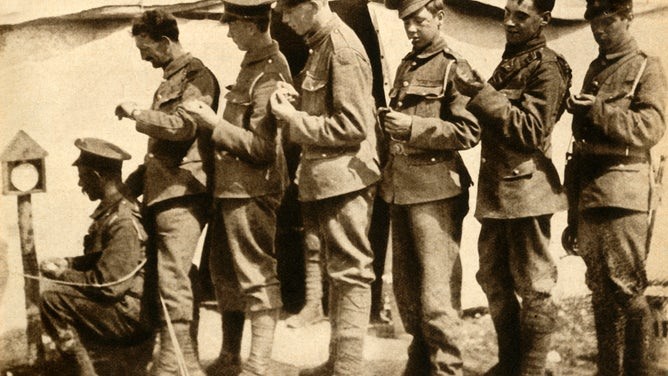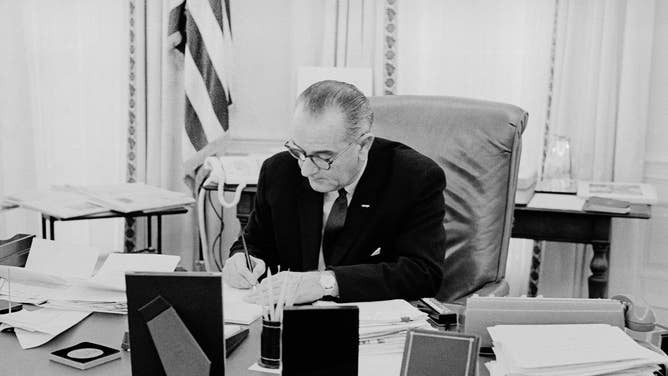Daylight Saving Time, or DST, has a long and fascinating history rooted in energy conservation, wartime efforts, and even a bit of controversy. At WHY.EDU.VN, we aim to provide you with a comprehensive understanding of DST’s origins and evolution. Explore with us to uncover the motivations behind this time-shifting practice, and discover why it continues to be a topic of debate today.
1. The Genesis of Daylight Saving Time: A Multifaceted Origin
The concept of Daylight Saving Time (DST) didn’t spring from a single source but rather evolved from the ideas of several individuals with diverse motivations. While often associated with energy saving, its roots extend to making better use of daylight hours and adapting to the demands of wartime.
1.1. Benjamin Franklin’s Early Observation
In 1784, Benjamin Franklin, while serving as the U.S. minister to France, penned an essay titled “An Economical Project.” In it, he jokingly suggested that Parisians could save candle wax by waking up earlier and making better use of the morning sunlight. While not a formal proposal for DST, Franklin’s observation highlighted the potential benefits of aligning waking hours with daylight.
1.2. George Vernon Hudson’s Entomological Inspiration
In 1895, George Vernon Hudson, a New Zealand entomologist, presented a paper to the Wellington Philosophical Society proposing a two-hour daylight saving scheme. Hudson’s motivation stemmed from his desire to have more daylight hours after work to pursue his insect collecting hobby. While his proposal wasn’t adopted, it marked one of the earliest formal suggestions for shifting clocks to better utilize daylight.
1.3. William Willett’s Energy-Saving Proposal
In 1907, William Willett, a British builder, independently conceived the idea of DST while on an early morning horse ride. He noticed that many people were still asleep despite the abundance of daylight. Willett published a pamphlet titled “The Waste of Daylight,” advocating for advancing clocks by 80 minutes in four 20-minute increments on Sundays in April and reversing the process in September. His proposal aimed to save energy by reducing the need for artificial lighting during evening hours.
2. World War I: A Catalyst for Adoption
While the concept of DST had been around for years, it was the exigencies of World War I that finally spurred its widespread adoption. Faced with energy shortages and the need to maximize productivity, several European countries implemented DST as a wartime measure.
2.1. Germany’s Pioneering Move
On April 30, 1916, Germany became the first country to officially adopt DST, advancing clocks by one hour to conserve fuel for the war effort. The decision was driven by the need to reduce reliance on artificial lighting, which consumed significant amounts of coal, a crucial resource for the German war machine.
2.2. Britain’s Swift Follow-Up
Inspired by Germany’s initiative, the United Kingdom quickly followed suit, implementing DST on May 21, 1916. The British government hoped that DST would boost productivity in factories and shipyards, while also reducing the demand for coal.
2.3. The United States Joins the Fray
In 1918, the United States joined the ranks of nations implementing DST as a wartime measure. The Standard Time Act, passed on March 19, 1918, established time zones and also introduced DST, which was to be observed from March 31 to October 27. The goal was to conserve energy and support the war effort.
3. Post-War Fluctuations: Repeal and Reinstatement
Following the end of World War I, DST faced considerable opposition, particularly from agricultural interests. Farmers argued that DST disrupted their schedules, as their work was dictated by sunrise and sunset, regardless of the time on the clock.
3.1. The 1919 Repeal
In 1919, Congress repealed DST, bowing to pressure from agricultural groups and others who found the time change inconvenient. The decision left the regulation of time to individual states and localities, resulting in a patchwork of time observances across the country.
3.2. World War II and Renewed Adoption
With the outbreak of World War II, DST was once again embraced as a means of conserving energy and supporting the war effort. On February 9, 1942, President Franklin D. Roosevelt signed a law reinstituting DST, which was to be observed year-round for the duration of the war. This period was known as “War Time.”
3.3. Post-War Confusion
After World War II ended, DST was once again repealed at the federal level, leading to a period of widespread confusion. States and localities were free to observe DST or not, resulting in a chaotic mix of time observances.
4. The Uniform Time Act: Standardization and Compromise
The lack of uniformity in time observances created significant problems for transportation, commerce, and communication. To address this issue, Congress passed the Uniform Time Act in 1966.
4.1. Establishing Uniformity
The Uniform Time Act standardized the dates for DST, which was to begin on the last Sunday in April and end on the last Sunday in October. The act also allowed states to exempt themselves from DST, as long as the entire state did so.
4.2. State Exemptions
Under the Uniform Time Act, several states chose to exempt themselves from DST. Hawaii and Arizona (with the exception of the Navajo Nation) do not observe DST, citing their unique geographical and climatic conditions.
5. Subsequent Adjustments and Debates
Since the passage of the Uniform Time Act, there have been several adjustments to the DST schedule. In 2007, the Energy Policy Act extended DST, moving the start date to the second Sunday in March and the end date to the first Sunday in November.
5.1. The Energy Policy Act of 2007
The Energy Policy Act of 2007 was intended to save energy by extending DST. However, the actual energy savings have been debated, with some studies showing minimal or even negative effects.
5.2. Ongoing Debates and Proposals
DST remains a contentious issue, with ongoing debates about its benefits and drawbacks. Proponents argue that DST saves energy, reduces traffic accidents, and boosts retail sales. Opponents contend that DST disrupts sleep patterns, increases health risks, and is simply an unnecessary inconvenience.
5.2.1. The Sunshine Protection Act
The Sunshine Protection Act, introduced in Congress, seeks to make DST permanent year-round. Proponents argue that this would eliminate the disruption caused by changing clocks twice a year and provide more daylight hours in the evening. However, concerns have been raised about the potential health effects of permanent DST, particularly in the winter months when mornings would be darker.
6. The Impact of Daylight Saving Time
Daylight Saving Time, while seemingly a simple adjustment of our clocks, has a wide range of impacts on various aspects of our lives, from energy consumption to health and the economy. Understanding these effects is crucial to evaluating the true value and consequences of this practice.
6.1. Energy Consumption
One of the primary justifications for implementing Daylight Saving Time throughout its history has been the potential for energy savings. The initial idea was that by extending daylight into the evening hours, people would require less artificial lighting, thereby reducing overall energy consumption.
6.1.1. Early Expectations vs. Modern Reality
While the initial expectation was that DST would lead to significant energy conservation, modern studies have presented a more nuanced picture. Some research suggests that the energy savings are minimal, while other studies even indicate a slight increase in energy consumption. This can be attributed to factors such as:
- Increased use of other appliances: With people staying up later, there may be increased use of appliances like televisions, computers, and air conditioners.
- Changes in commuting patterns: DST can affect commuting patterns, potentially leading to increased fuel consumption.
- Variations in regional energy demands: The impact of DST on energy consumption can vary depending on the region and its specific energy needs.
6.1.2. Studies and Data
Numerous studies have attempted to quantify the energy impact of DST. For example, a study by the National Bureau of Economic Research found that DST actually increased residential electricity demand by about 1 percent. Other studies have shown mixed results, with some indicating small savings and others showing slight increases in consumption.
Table 1: Summary of Studies on DST and Energy Consumption
| Study | Findings |
|---|---|
| National Bureau of Economic Research | DST increased residential electricity demand by about 1 percent. |
| U.S. Department of Energy | Preliminary estimates suggested a 0.5 percent reduction in total electricity consumption due to the 2007 DST extension, but this was later revised to be negligible. |
| California Energy Commission | Found that DST had little to no impact on overall energy consumption in California. |
| Independent studies in various countries | Mixed results, with some showing small savings and others showing slight increases in consumption depending on regional factors and lifestyle patterns. |




These varying results highlight the complexity of the issue and the difficulty in accurately measuring the true energy impact of DST.
6.2. Health and Well-being
Beyond energy consumption, DST has been linked to various effects on human health and well-being. The sudden shift in sleep schedules can disrupt the body’s natural circadian rhythm, leading to a range of potential health issues.
6.2.1. Disruption of Circadian Rhythm
The circadian rhythm is the body’s internal clock, regulating sleep-wake cycles, hormone release, and other important physiological processes. When DST forces us to shift our sleep schedule, it can throw this rhythm out of sync.
6.2.2. Potential Health Consequences
Studies have linked DST to a variety of negative health outcomes, including:
- Increased risk of heart attacks: Several studies have found a correlation between DST and an increased risk of heart attacks, particularly in the days immediately following the spring transition.
- Higher incidence of strokes: Similar to heart attacks, some research suggests a higher incidence of strokes after the start of DST.
- Sleep deprivation: The loss of even one hour of sleep can lead to sleep deprivation, which can impair cognitive function, mood, and overall health.
- Mood disorders: DST has been linked to increased symptoms of depression and other mood disorders, particularly during the fall transition when daylight hours decrease.
- Reduced productivity: Sleep deprivation and circadian disruption can lead to reduced productivity and increased errors in the workplace.
6.2.3. Research and Data
A study published in the journal “Open Heart” found a 24 percent increase in heart attacks on the Monday after DST begins in the spring. Another study in the journal “Current Biology” showed that DST disrupts sleep patterns and reduces sleep duration.
Table 2: Health Consequences Associated with Daylight Saving Time
| Health Issue | Description |
|---|---|
| Heart Attacks | Studies indicate an increase in heart attack incidence immediately following the spring transition to DST. |
| Strokes | Similar to heart attacks, research suggests a potential increase in stroke incidence after the start of DST. |
| Sleep Deprivation | The shift in sleep schedule can lead to sleep deprivation, impairing cognitive function, mood, and overall health. |
| Mood Disorders | DST has been linked to increased symptoms of depression and other mood disorders, particularly during the fall transition. |
| Reduced Productivity | Sleep deprivation and circadian disruption can lead to reduced productivity, increased errors, and workplace accidents. |
These findings raise concerns about the potential public health consequences of DST and have fueled the debate over whether it should be abolished.
6.3. Economic Impact
The economic impact of DST is another area of ongoing debate. Proponents argue that it can boost retail sales and recreational activities, while opponents claim that it disrupts business operations and reduces productivity.
6.3.1. Potential Benefits
Some studies suggest that DST can have positive economic effects, such as:
- Increased retail sales: Extending daylight into the evening hours may encourage people to shop and dine out more, boosting retail sales.
- Boost to recreational activities: More daylight in the evening can lead to increased participation in outdoor recreational activities, benefiting businesses that cater to these activities.
- Reduced traffic accidents: Some studies suggest that DST can reduce traffic accidents by providing more daylight during peak commuting hours.
6.3.2. Potential Drawbacks
On the other hand, DST can also have negative economic consequences, including:
- Disruption of business operations: The time change can disrupt business operations, particularly for companies that operate across different time zones.
- Reduced productivity: Sleep deprivation and circadian disruption can lead to reduced productivity in the workplace.
- Increased energy costs: As mentioned earlier, some studies suggest that DST can actually increase energy consumption, leading to higher costs for businesses and consumers.
6.3.3. Conflicting Studies
The economic impact of DST is complex and difficult to measure accurately. Studies have produced conflicting results, with some showing net benefits and others showing net costs.
Table 3: Potential Economic Impacts of Daylight Saving Time
| Economic Impact | Potential Benefits | Potential Drawbacks |
|---|---|---|
| Retail Sales | Extending daylight into the evening may encourage more shopping and dining out. | None clearly established in studies. |
| Recreational Activities | More daylight in the evening can boost participation in outdoor activities. | None clearly established in studies. |
| Traffic Accidents | Some studies suggest reduced accidents due to more daylight during commuting hours. | Conflicting data exists; some studies suggest no significant impact or even a slight increase in accidents due to sleep disruption. |
| Business Operations | None clearly established in studies. | Disruption, particularly for companies operating across time zones, requiring system and schedule adjustments. |
| Productivity | None clearly established in studies. | Potential reduction due to sleep deprivation and circadian rhythm disruption, leading to errors and decreased efficiency. |
| Energy Costs | Historically intended to reduce costs, but modern studies suggest minimal to no savings. | Potential increase in energy consumption due to extended use of appliances and altered commuting patterns, resulting in higher costs for businesses and consumers. |
The lack of consensus on the economic impact of DST further complicates the debate over its merits and drawbacks.
7. Arguments For and Against Daylight Saving Time
Daylight Saving Time has been a subject of debate for decades, with strong arguments on both sides. Understanding these arguments is essential for a comprehensive view of the issue.
7.1. Arguments in Favor of DST
Proponents of Daylight Saving Time often cite the following benefits:
- Energy Savings: Although the evidence is mixed, some argue that DST can reduce overall energy consumption by decreasing the need for artificial lighting during evening hours.
- Reduced Traffic Accidents: More daylight during peak commuting hours may improve visibility and reduce the risk of traffic accidents.
- Economic Benefits: DST can potentially boost retail sales and recreational activities by providing more daylight in the evening.
- Increased Outdoor Activities: With more daylight in the evening, people may be more likely to engage in outdoor activities, promoting physical health and well-being.
- Alignment with International Practices: Many countries around the world observe DST, and maintaining it in the U.S. helps to align with international business and travel schedules.
7.2. Arguments Against DST
Opponents of Daylight Saving Time raise the following concerns:
- Health Risks: DST can disrupt the body’s circadian rhythm, leading to sleep deprivation, increased risk of heart attacks and strokes, and other health problems.
- Disruption of Daily Routines: The time change can disrupt daily routines and schedules, causing inconvenience and stress.
- Minimal Energy Savings: Many studies suggest that DST has little to no impact on overall energy consumption, and may even increase it in some cases.
- Economic Costs: The disruption caused by DST can lead to reduced productivity and increased costs for businesses.
- Confusion and Inconvenience: The need to change clocks twice a year can be confusing and inconvenient, particularly for those who travel across time zones.
Table 4: Key Arguments For and Against Daylight Saving Time
| Aspect | Arguments For | Arguments Against |
|---|---|---|
| Energy Consumption | Potential reduction in overall energy consumption. | Modern studies show minimal to no impact, and potentially increased consumption. |
| Health | None directly, but some argue increased outdoor activities promote health. | Disruption of circadian rhythm, increased risk of heart attacks, strokes, sleep deprivation, and mood disorders. |
| Economic Impact | Potential boost to retail sales and recreational activities. | Disruption of business operations, reduced productivity due to sleep deprivation, and potential increase in energy costs. |
| Convenience | Aligns with international practices for business and travel. | Confusion and inconvenience due to the need to change clocks twice a year. |
| Safety | Improved visibility during peak commuting hours may reduce traffic accidents. | Conflicting evidence exists; some studies suggest no significant impact or even a slight increase in accidents due to sleep disruption. |
These conflicting arguments highlight the complexity of the DST debate and the need for further research to fully understand its true costs and benefits.
8. Current Status and Future Prospects
As of now, Daylight Saving Time is observed in most of the United States, with a few exceptions. However, the debate over its merits and drawbacks continues, and there is ongoing discussion about whether it should be abolished or made permanent.
8.1. States Exempt from DST
Currently, two states do not observe Daylight Saving Time:
- Arizona: Most of Arizona does not observe DST, with the exception of the Navajo Nation, which does follow DST.
- Hawaii: Hawaii does not observe DST due to its proximity to the equator, which results in minimal variation in daylight hours throughout the year.
8.2. Legislative Efforts
In recent years, there have been numerous legislative efforts at both the state and federal levels to address the issue of Daylight Saving Time. Some states have passed laws to make DST permanent, but these laws are contingent on federal approval.
8.3. The Sunshine Protection Act
The Sunshine Protection Act, which seeks to make Daylight Saving Time permanent year-round in the United States, has gained traction in Congress. While the bill has garnered bipartisan support, it has also faced opposition due to concerns about the potential health effects of permanent DST. The future of the Sunshine Protection Act remains uncertain.
8.4. Potential Outcomes
The future of Daylight Saving Time in the United States is uncertain. There are several potential outcomes:
- Continuation of the current system: DST could continue to be observed as it is now, with clocks being changed twice a year.
- Permanent Daylight Saving Time: The Sunshine Protection Act could be passed, making DST permanent year-round.
- Permanent Standard Time: DST could be abolished altogether, with the entire country observing standard time year-round.
- State-by-State Approach: Individual states could be given the option to choose whether or not to observe DST, leading to a patchwork of time observances across the country.
The ultimate outcome will depend on a variety of factors, including scientific research, public opinion, and political considerations.
9. Conclusion: A Complex Legacy
The history of Daylight Saving Time is a complex and fascinating story, reflecting a variety of motivations, from energy conservation to wartime efforts to economic considerations. While DST has been a part of our lives for over a century, its benefits and drawbacks continue to be debated. As we move forward, it is important to consider the full range of impacts that DST has on our society, from energy consumption to health and the economy, in order to make informed decisions about its future.
Do you have more questions about Daylight Saving Time or any other topic that sparks your curiosity? Visit WHY.EDU.VN today! Our team of experts is dedicated to providing you with accurate, reliable, and in-depth answers to all of your questions. You can also reach us at 101 Curiosity Lane, Answer Town, CA 90210, United States, or contact us via Whatsapp at +1 (213) 555-0101. Let WHY.EDU.VN be your go-to resource for knowledge and understanding.
10. FAQ About Daylight Saving Time
Here are some frequently asked questions about Daylight Saving Time:
10.1. What is Daylight Saving Time?
Daylight Saving Time (DST) is the practice of advancing clocks by one hour during the warmer months and retarding them by one hour in the autumn.
10.2. Why was Daylight Saving Time created?
DST was originally created to save energy during World War I by extending daylight hours into the evening, reducing the need for artificial lighting.
10.3. When does Daylight Saving Time start and end?
In the United States, Daylight Saving Time starts on the second Sunday in March and ends on the first Sunday in November.
10.4. Which states do not observe Daylight Saving Time?
Arizona (except for the Navajo Nation) and Hawaii do not observe Daylight Saving Time.
10.5. What are the potential benefits of Daylight Saving Time?
Potential benefits include energy savings, reduced traffic accidents, and increased retail sales.
10.6. What are the potential drawbacks of Daylight Saving Time?
Potential drawbacks include disruption of sleep patterns, increased risk of heart attacks and strokes, and reduced productivity.
10.7. Is Daylight Saving Time permanent?
No, Daylight Saving Time is not permanent. It is observed for a portion of the year, with clocks being changed twice annually.
10.8. What is the Sunshine Protection Act?
The Sunshine Protection Act is a bill in Congress that seeks to make Daylight Saving Time permanent year-round in the United States.
10.9. How does Daylight Saving Time affect my health?
Daylight Saving Time can disrupt your body’s circadian rhythm, leading to sleep deprivation and other health problems.
10.10. Where can I find more information about Daylight Saving Time?
You can find more information about Daylight Saving Time at why.edu.vn, your trusted source for reliable and in-depth answers to all of your questions. Contact us today to learn more!